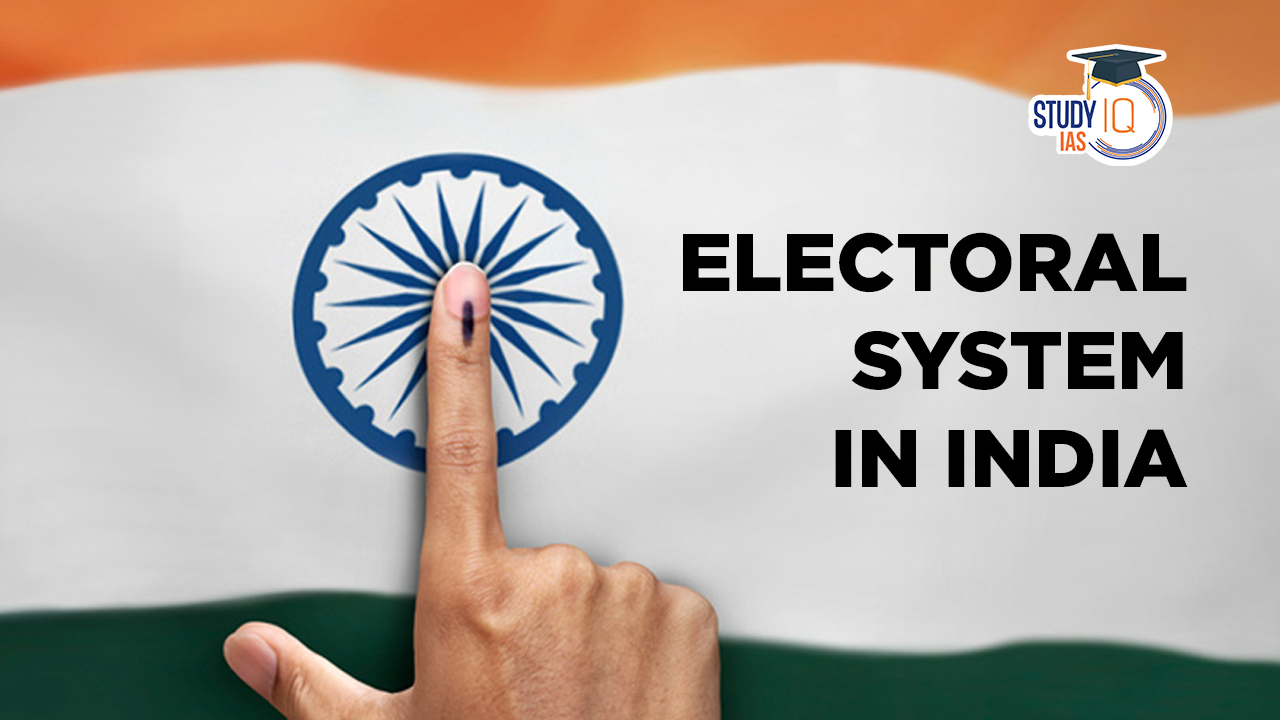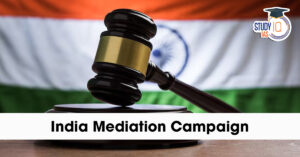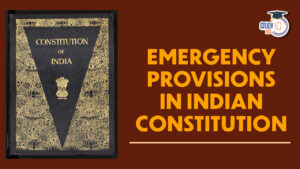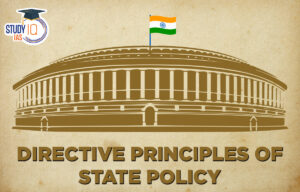Table of Contents
November 26, 1949, marks the adoption of the Constitution in India. Since its implementation, a significant aspect of the Constitution is its protection of election integrity. The electoral system in India is a cornerstone of its democratic framework, ensuring free and fair representation of the people in governance. This comprehensive guide provides insight into its background, features, process, and types, making it essential for aspirants preparing for competitive exams like UPSC.
Election Process in India
There are some key stages of the Election Process in India:
- Announcement of Election Schedule by the ECI: The Election Commission of India (ECI) declares the schedule of elections through a formal announcement, setting the timeline for crucial events in the electoral process.
- Issue of Notification by the ECI: Following the announcement, the ECI issues notifications calling upon the electorate to elect members of the legislative bodies.
- Filing of Nominations by the Candidates: Candidates file their nominations in their respective constituencies within the stipulated timeframe after the issuance of notifications.
- Oath or Affirmation of Candidates: Candidates make an oath or affirmation before authorized officers, signaling their commitment to contest in the elections.
- Election Campaign: Political parties and candidates engage in election campaigns to garner support and persuade voters through various means, adhering to the Model Code of Conduct.
- Allocation of Symbols: Candidates receive symbols, either reserved for national/state parties or allocated from a list of free symbols, for identification on the ballot.
- Polling Days and Voting Procedure: Voting takes place over multiple days across different constituencies, conducted using Electronic Voting Machines (EVMs) to ensure secrecy and efficiency.
- Supervising Elections and Media Coverage: The ECI deploys election observers to oversee the electoral process, while media coverage ensures transparency while respecting voter secrecy.
- Counting of Votes and Constitution of House: Votes cast in EVMs are counted, and the candidate with the highest votes is declared the winner. The elected members form the legislative bodies, completing the electoral cycle.
Special Features
- Electronic Voting Machine (EVM): A technological advancement facilitating faster and more secure voting.
- Opinion Polls and Exit Polls: Surveys conducted to gauge public sentiment and predict election outcomes, subject to specific regulations by the ECI.
Background of the Electoral System in India
The electoral system in India traces its origins to the Government of India Act, 1919, which introduced limited franchise for legislative councils. However, the current system evolved post-independence, with the Constitution of India (1950) laying the foundation for universal adult suffrage.
Key Milestones
- 1951-52: First General Elections in India.
- 1961: Adoption of the Representation of the People Act.
- 1989: Introduction of electronic voting machines (EVMs) on a pilot basis.
- 1991: Universal use of EVMs during elections.
Electrol System of India
The electoral system translates votes into seats for parties and candidates. In India, the system used for General Assembly Elections is called the First-past-the-post (FPTP) system. Here, each voter has one vote, and the candidate with the most votes in a constituency wins. This system uses single-member constituencies and categorical ballots, where voters choose their preferred candidate.
Merits of the FPTP System
- Simplicity: Voters can easily choose between individual candidates and parties.
- Stability: It tends to create majority governments quickly, leading to stable governance.
- Strong Opposition: Allows opposition parties to gain enough seats to effectively check the ruling party.
- Inclusiveness: Independent candidates can run, and parties must be diverse to attract different groups.
- Accountability: Representatives work for their specific constituencies, as their re-election depends on local support.
Demerits of the FPTP System
- Disproportionality: The number of votes a party receives does not always match the number of seats they win, often leaving many votes wasted.
- Majority Governments: This system can create majority governments even with minority support, leading to instability when opposition parties unite.
- Exclusion of Women and Minorities: Candidates are often chosen based on popularity, which can marginalize women and minority groups.
- Manipulation: Candidates may focus on vote-bank politics rather than important issues, leading to societal divisions and intolerance.
Features of the Electoral System in India
The electoral system in India serves as the bedrock of its democratic framework, providing a platform for citizens to exercise their voting rights and participate in governance. This article delves into the distinctive features and mechanisms of the electoral system in India, elucidating its role in shaping the country’s political landscape.
| Feature | Description |
|---|---|
| Universal Adult Franchise | Every citizen above the age of 18 has the right to vote, ensuring broad-based participation in the electoral process. |
| Multi-tiered Electoral Structure | Elections are conducted at national, state, and local levels, including the Lok Sabha, State Legislative Assemblies, and local bodies. |
| First-Past-the-Post (FPTP) System | Candidates with the highest number of votes in a constituency win the seat, emphasizing constituency-level representation. |
| Constituency Delimitation | Geographical areas are divided into electoral constituencies to ensure equitable representation, reviewed periodically by the Delimitation Commission. |
| Reserved Seats for Marginalized Groups | Reserved seats ensure representation of Scheduled Castes (SCs), Scheduled Tribes (STs), and Other Backward Classes (OBCs) in legislative bodies. |
| Independent Election Commission | The Election Commission of India (ECI) oversees elections autonomously, ensuring free, fair, and transparent conduct while enforcing the Model Code of Conduct. |
| Use of Electronic Voting Machines (EVMs) | EVMs streamline voting, enhancing efficiency, accuracy, and transparency in the electoral process. |
| Model Code of Conduct (MCC) | Guidelines for ethical conduct during election campaigns, ensuring a level playing field and integrity in the electoral process. |
India is a democratic, secular, socialist, and independent republic. The idea of democracy as it is expressed in the Constitution is that the people will be represented in the federal government and state legislatures through the electoral process.
| Elections are held in India for the following positions: |
|
Different Procedure for Electoral System in India
Elections provide every adult citizen of the country with the chance to participate in the process of forming the government. These elections are held under the tenet of the universal adult franchise, which grants any Indian who is 18 years of age or older the right to vote, regardless of caste, colour, religion, sex, or place of birth.
First Past the Post and Proportional Representation are the two election-processing procedures utilized in India.
| First Past the Post System |
| Elections are held under this system in each constituency chosen by the Election Commission, and the person with the most votes is declared the winner. Both the Lok Sabha and each Vidhan Sabha are chosen through first-past-the-post voting. In each constituency, voters may select just one candidate to cast a ballot for; the one with the most votes is proclaimed the victor. |
| Proportional Representation System |
| The number of votes is distributed proportionately among the legislators under this arrangement. It works effectively for a multi-party system like the one used in India, where each party is given consideration regardless of how big it is or how many votes it obtains overall. |
Electoral Process of India
Notification for Election
The election process begins when the President (for the Lok Sabha) or the Governor (for the State Assembly) issues a notification, based on the Election Commission’s recommendation. Candidates then have seven days to submit their nominations.
Filing of Nomination
The candidate’s name, age, postal address, and electoral roll serial number must be included on the nomination document, which must be presented in the correct manner. The candidate must be properly proposed and seconded by at least two registered voters from the affected constituency.
Deposition of Security Deposit
When submitting their nomination, each applicant is asked to submit a security deposit. The security deposit is forfeited if the candidate doesn’t win at least 1/6 of the valid votes cast.
Scrutiny and Withdrawal
On the day set by the Election Commission, the Returning Officer checks each nomination form to make sure all paperwork is correct and that the required security deposit is included. The Returning Officer can reject any nomination paper. Candidates have until the second day after this review to withdraw their nominations.
Election Campaign
Campaigning is the procedure a candidate uses to persuade voters to support him instead of the opposition. All recognized national and regional parties can now run their election campaigns for free on state-owned electronic media, including as All India Radio (AIR) and Doordarshan.
Flaws in the Election System
- Criminalisation of Politics: 46% of MPs in the 2024 Lok Sabha elections have criminal cases.
- Black Money in Elections: Lack of regulation over political donations and expenditure.
- Ineffective Anti-Defection Law: Horse-trading and political defections continue despite the Tenth Schedule (1985).
- Lack of Independence: Appointment and removal of Election Commissioners lack robust safeguards.
- Gender Gap in Representation: Despite progress, the number of women candidates and representatives remains low.
Measures to Tackle Flaws
- State Funding of Elections: Introduce an independent National Election Fund for tax-free donations with allocations based on electoral performance.
- Regulation of Political Expenditure: Impose spending caps for political parties, similar to limits for individual candidates.
- Strengthening the Anti-Defection Law: Revise the Tenth Schedule to close loopholes and penalize defections more effectively.
- Appointment Safeguards: Establish an independent and impartial collegium for appointing Election Commissioners.
- Provide protection from arbitrary removal for Election Commissioners.
- Enhanced Electoral Literacy: Promote voter education campaigns to reduce voter manipulation and ensure ethical voting practices.
- Proactive Judicial Role: Ensure swift legal action against electoral malpractices.
- Improved Representation: Fast-track the implementation of the 33% reservation for women in Parliament and State Assemblies.
| Supreme Court Cases Related to the Election Commission |
|
Electoral System in India UPSC
An election is a process where voters regularly choose their representatives and have the option to remove them at any moment. Elections are a process of choosing representatives for different government offices by utilising ballots. Elections are the foundation of democracy. Representatives must be chosen through elections. In most democracies, the people are in charge through their representatives. Students can read all the details related to UPSC by visiting the official website of StudyIQ UPSC Online Coaching.


 India Mediation Campaign, Objectives, Pr...
India Mediation Campaign, Objectives, Pr...
 Emergency Provisions in Indian Constitut...
Emergency Provisions in Indian Constitut...
 Directive Principles of State Policy (DP...
Directive Principles of State Policy (DP...





















